Cleaning and disinfection of air conditioning systems: requirements and procedure for cleaning
During the operation of ventilation systems, channels and ventilation shafts become contaminated, which in turn leads to the appearance of bacteria that cause disease in humans, mold, mildew, . The spread of these microorganisms leads to infection of people living in the house.
That is why monitoring the cleanliness of ventilation, cleaning and disinfection of air conditioning systems is considered one of the paramount tasks, the solution of which helps to preserve people's health.
This article discusses in detail the need for cleaning and subsequent disinfection of ventilation systems, the legislative framework governing this process, the technology for carrying out such work.
The content of the article:
HVAC requirements
Studies have confirmed that the vast majority of infectious diseases are transmitted by aerosol (airborne droplets).
Modern apartment buildings, public and administrative buildings, industrial production, entertainment complexes and other crowded places are areas of high aerobiological danger. And therefore, they are considered the main places for the spread of aerosol transmitted infections.
Ventilation and air conditioning systems in this case are one of the ways to protect against the spread of infection.
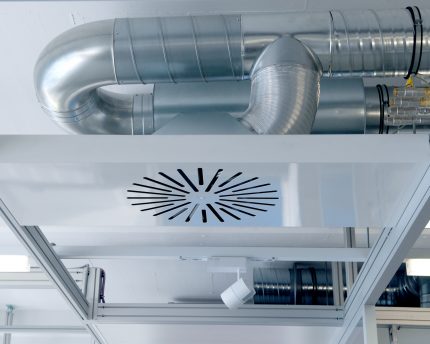
The ventilation system consists of combined with each other elements of special equipment designed for processing and changing air in a closed room.Using a ventilation system allows you to systematically supply fresh air into the room, cleaning the room from exhaust.
An air conditioning system is a set of special equipment for reconstructing and automatically maintaining the necessary parameters of the indoor air, regardless of external or internal atmospheric conditions.
A comparative review of ventilation and air conditioning systems was given in this stuff.
If bacteria, mold, fungus will form inside these systems due to dirt, then they become dangerous for human life. Understanding this, the legislator obliged homeowners, managers of residential and non-residential premises, renting premises or renting premises under a lease agreement, as well as other users of premises, to ensure regular cleaning of air exchange systems.
The main law, which prescribes maintenance standards, organization and control over the exclusive observance of sanitary norms and rules, an algorithm of measures to maintain the cleanliness of these systems, is the Federal Law of March 30, 1999 No. 52-FZ (having the name - “On the sanitary-epidemiological well-being of the population”).
This law provides that a system designed to circulate indoor air will be considered clean if there are no humidification zones and visible contaminants on the internal surfaces of the air ducts through which the air flow passes. The same applies to special network and ventilation equipment.
As for contamination, the ventilation and air conditioning system will be considered to require cleaning and disinfection if contamination was visually detected on the inner surfaces of the connecting pipes of the system. Cleaning is also required if, as a result of laboratory studies, the particles of contamination, the presence of dangerous bacteria, fungus and mold in the air duct environment are detected and timely filter replacement.
Inspection of air conditioning and ventilation systems should be carried out at least once every six months as part of production control of the sanitary condition of the equipment.
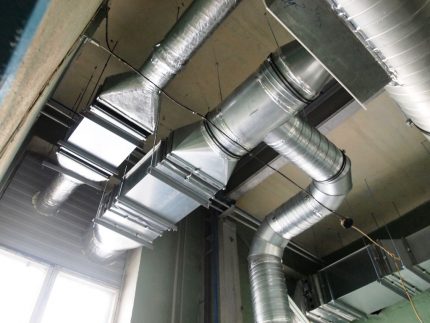
System Research Steps
The study of air exchange systems in buildings for pollution is carried out in several stages:
- Stage 1 - Documentary. At this stage, the passports of ventilation and air conditioning systems are checked, during which the conformity of design documentation is determined.
- Stage 2 - actual verification. At this stage, the main microclimate parameters are measured inside the systems (temperature, air flow rate, humidity), visual inspection and determination of the degree of contamination of all components of the ventilation and air conditioning system (garbage and inorganic deposits, mold and other organic formations). At this stage, the necessary material is collected from the ventilation and air conditioning system and sent to laboratory tests.
- Stage 3 - molecular research in the laboratory. All the material that was collected during the study is checked in the laboratories for the presence of bacteria, microbes, conditionally pathogenic microflora. An assessment of the effectiveness of disinfection and previous measures to clean and disinfect systems.
- Stage 4 - analysis of the results and decision on the necessary activities. At this stage, the result of the study is made out in the form of an act, which indicates which sanitary and epidemiological studies were conducted with a conclusion on compliance or non-compliance with established standards.
Cleaning and disinfection of air conditioning and ventilation systems, based on the materials of the examination and assessment of the sanitary condition, is carried out by one of the methods that will be discussed in the next part of the article.
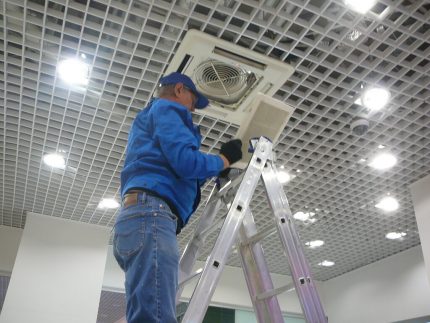
Detected during the study of pollution can be divided into four types:
- accumulation of dust and dirtthat are formed during the operation of air exchange systems;
- massive trash, which appears during the installation of ventilation ducts, or as a result of intentional human pollution;
- parasitic pollution - This is a fungus, mold and other bacteria that arose due to the recreated microclimate inside the system;
- body fatthat arise as a result of the subsidence of the steam formed during cooking.
Thus, having determined the nature of the pollution, the method of cleaning the system is selected.
Basic cleaning and disinfection methods
First of all, it is worth noting that the work related to the cleaning of air systems in buildings should be entrusted to professionals.
Work with the use of a disinfectant must clearly comply with the algorithm in accordance with the instructions (chemical consumption, method and procedure for its use), solutions should be prepared only in those rooms in which the supply and exhaust ventilation is carried out.
There are several methods for cleaning systems. Let's consider them further.
Method # 1 - Dry Cleaning
It is considered a simple method, because it is the most common. It consists in using a special device: an electric or pneumatic brushing machine on the control panel.
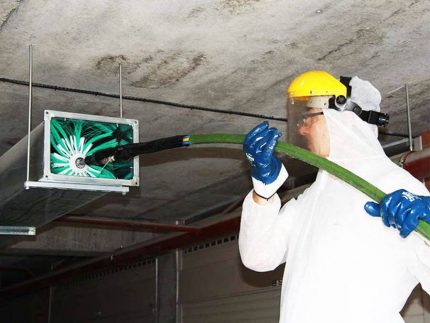
Having picked up the brush necessary for the diameter, the device is introduced into the outlet and pushed into the channel. Using pressure or electricity, controlled by the remote control, the machine mechanically cleans the internal walls of the ventilation.
Industrial vacuum cleaners are used to remove the dirt removed from the walls. After such cleaning, it becomes possible to assess the presence of mold or fungus infection on the walls.
Method # 2 - Dry Cleaning
This method is used to disinfect ventilation ducts using chemicals that break down dirt, destroy fungus and mold.
After carrying out dry cleaning, it is imperative to rinse and completely remove the chemical reagent from the ventilation duct.
This is a very effective method, but it may not be used in all buildings. So, it can not be used in schools and kindergartens, in medical institutions.
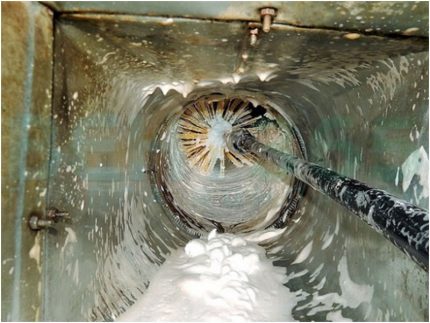
It is worth remembering that for the destruction of harmful microorganisms using chemical solutions, a special license is required, which is available for all officially registered companies that provide cleaning services for ventilation systems.
Method # 3 - Temperature Cleaning
This method is considered the safest and most environmentally friendly, but it requires large financial costs.
The essence of the method is to clean the entire system using cold fog or dry ice crystals. The pumping generators drive the cold component into the system and, as a result of its action, the air duct is disinfected and the fungus, bacteria and other parasites are destroyed.
Procedure for cleaning and disinfection
After determining the necessary list of measures, a cost estimate should be drawn up, where all the steps taken to clean the building's air exchange systems are detailed.
Cleaning and disinfection should be planned in advance. Residents of houses, employees of buildings should be warned in advance about the timing and time of these works, as well as familiarized with precautions.
Removable components of the ventilation and air conditioning system (grilles, nozzles, nozzles, grids, diffusers, etc.) must be removed for the duration of the work. At the same time, they are cleaned mechanically by hand, after which disinfectants are applied.
To familiarize yourself with ventilation cleaning equipment, please go to this link.
Devices that regulate the movement of air in the system (valves, dampers) must be cleaned without dismantling. For this, the system provides for special "inspection doors".
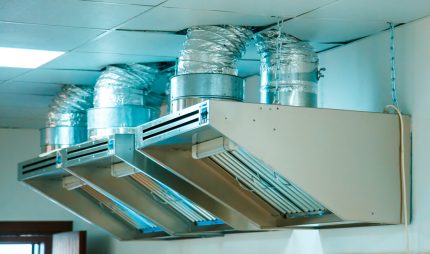
It is worth remembering that the work on cleaning and disinfection of air exchange systems should be carried out under the direct supervision of a ventilation engineer and responsible for the operation of these systems.
To clean the evaporator block of used domestic air conditioners, you must perform the following sequence of actions:
- detach the outer cover;
- remove the air and carbon filters - treat the air with a solution, and replace the coal;
- perform mechanical cleaning of the radiator grill and condensate storage elements.
The internal surface of the air conditioner housing and mixing chamber are cleaned through the provided service doors. Local air conditioners must be disassembled in accordance with the repair and operating instructions.
Each stage of the cleaning is documented and indicated in the final report of the work performed.
Conclusions and useful video on the topic
The cleaning sequence for HVAC systems is shown in this video:
At present, modern cleaning methods make it possible to remove complex contaminants and fight harmful microorganisms without dismantling the ventilation systems.
The technical capabilities of devices and means for cleaning ventilation ducts allow you not to disturb during the work of people in the building. And control over the systematic nature of cleaning will protect a person from diseases and ensure an influx of clean air into residential and office premises, which will help to create a healthy climate inside.
In the feedback block below the article, you can ask questions or add useful suggestions and tips for cleaning ventilation and air conditioning systems based on your own experience.

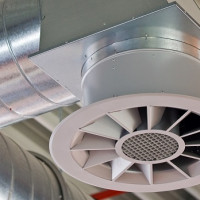 Comparative review of ventilation and air conditioning systems
Comparative review of ventilation and air conditioning systems 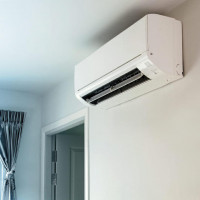 What is a split system: device and principle of operation of typical air conditioning systems
What is a split system: device and principle of operation of typical air conditioning systems 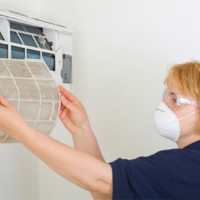 DIY split-system cleaning: routine inspection and maintenance
DIY split-system cleaning: routine inspection and maintenance 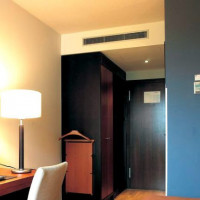 Air conditioner with fresh air supply: design and selection of a supply air split system
Air conditioner with fresh air supply: design and selection of a supply air split system 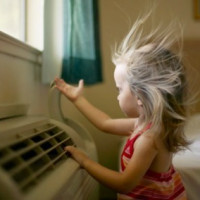 Maintenance of split systems: do-it-yourself cleaning, repair and refueling of HVAC equipment
Maintenance of split systems: do-it-yourself cleaning, repair and refueling of HVAC equipment 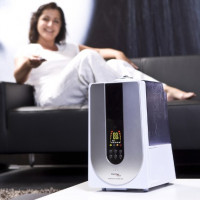 Why do you need a humidifier at home: the functions and purpose of the device for humidification
Why do you need a humidifier at home: the functions and purpose of the device for humidification  How much does it cost to connect gas to a private house: the price of organizing gas supply
How much does it cost to connect gas to a private house: the price of organizing gas supply  The best washing machines with dryer: model rating and customer tips
The best washing machines with dryer: model rating and customer tips  What is the color temperature of light and the nuances of choosing the temperature of the lamps to suit your needs
What is the color temperature of light and the nuances of choosing the temperature of the lamps to suit your needs  Replacement of a geyser in an apartment: replacement paperwork + basic norms and requirements
Replacement of a geyser in an apartment: replacement paperwork + basic norms and requirements